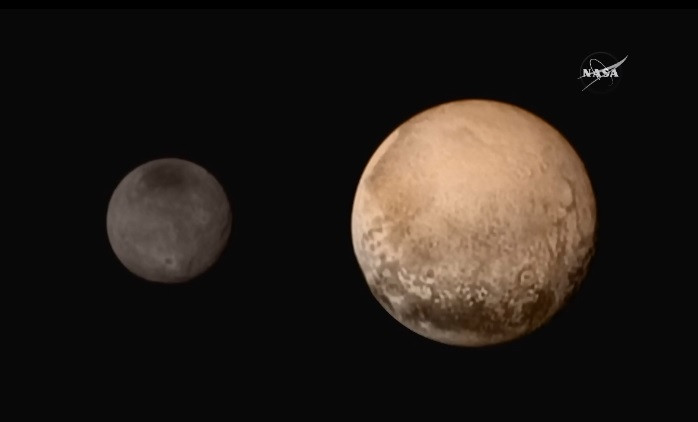New Horizons Pluto flyby countdown begins: 'Fasten your seatbelts'

It is less than 24 hours until Nasa's New Horizons will make its historic flyby of Pluto, when the spacecraft will come within 7,800 miles (12,500 kilometres) of the dwarf planet.
In a press conference ahead of the close approach, New Horizons principal investigator Alan Stern announced Pluto is bigger than previously thought, with the radius measuring 1,185m, and that they have detected methane and nitrogen ice at the planet's north pole.
He described the mission as a "gift for the ages", adding that at its closest the spacecraft will be sending back images of the surface at around 100m per pixel – meaning if you were looking at New York's Central Park you would be able to see the ponds.
The closest approach will last just a few minutes and scientists do not expect to hear back from the spacecraft until the evening. This is because New Horizons will be flying directly behind the shadow of Pluto and Charon.
Cathy Olkin, New Horizons deputy project scientist, said this will be a critical time while the spacecraft gets high resolution images.

The team said there is a small chance the spacecraft could encounter problems but that this is unlikely. They have estimated the risk of the loss of mission of New Horizons to be around one in 10,000.
Stern said he is confident this will not be the case: "We've taken a measured risk and searched for debris. But we are flying into the unknown and that's a risk you take .... [But I'm] not worried about it."
Explaining the immense precision involved with New Horizons, project manager Glen Fountain said the biggest challenge was navigating the spacecraft to the right point. He said it was the equivalent of a golfer hitting a hole in one from New York to Los Angeles. He said the team involved has done so well to get this precision, "I don't even believe it".
Between now and the flyby, New Horizons will take around 150 observations. The closest approach will take place at an estimated 12.49 GMT.
Stern said the mission is "already mouth-watering" and that up until now Pluto "has not disappointed". In terms of what to expect tomorrow, he added: "Fasten your seatbelts."
© Copyright IBTimes 2025. All rights reserved.






















